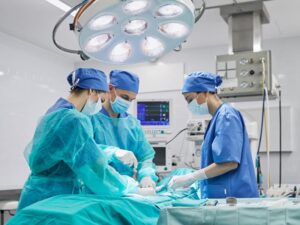The nose can be reshaped or improved through surgery called nose augmentation with bone graft behind the ear (ทํา จมูก กระดูก หลัง หู, which is the term in Thai) using a bone graft, which is often harvested from behind the ear. Only highly trained and skilled otolaryngologists or plastic surgeons should attempt such a procedure.
Consultation
First, there is the consultation and evaluation. The initial step is to schedule an appointment with a qualified otolaryngologist or plastic surgeon. The appointment is the time to share your hopes and fears as well as any relevant medical background information.
Procedure
Bone grafts may be taken from the iliac crest (pelvic bone), a rib, or the area behind the ear. Your surgeon will go over the options that make the most sense given your condition. The anesthesia is administered either as a general anesthetic or a local anesthetic combined with sedation, depending on the complexity of the surgery.
A little incision is made behind the ear to harvest bone for a graft if necessary. The surgeon gently cuts out a chunk of bone, which is then reshaped and made ready for the nose job. Reshaping the nose involves making incisions inside the nose to gain access to the nasal structure once the bone transplant has been prepared. The graft is precisely placed to offer volume and support where it is needed to modify the nose.
You will be closely observed in a recovery area after surgery. Typical adverse reactions include pain, swelling, and bruising. Antibiotics and pain relievers may be administered to deal with discomfort.
Postoperative Care And Recovery
Be sure to strictly adhere to your surgeon’s recommendations. The patient may be advised to rest with his or her head raised, minimize physical exertion, and avoid touching or pressing on his or her nose. Full recovery may take a few weeks to a few months.
Potential Dangers And Complications
There is always a chance of something going wrong during surgery. Infection, graft rejection, scarring, and disappointing outcomes are all possible side effects. Talk to your surgeon about these concerns during your consultation.
As nose augmentation with bone transplant is a delicate and sophisticated surgery, it is essential to select a highly qualified and experienced surgeon for this procedure. Your surgeon will tailor his or her explanation of the surgery to your unique questions and concerns during your consultation.




